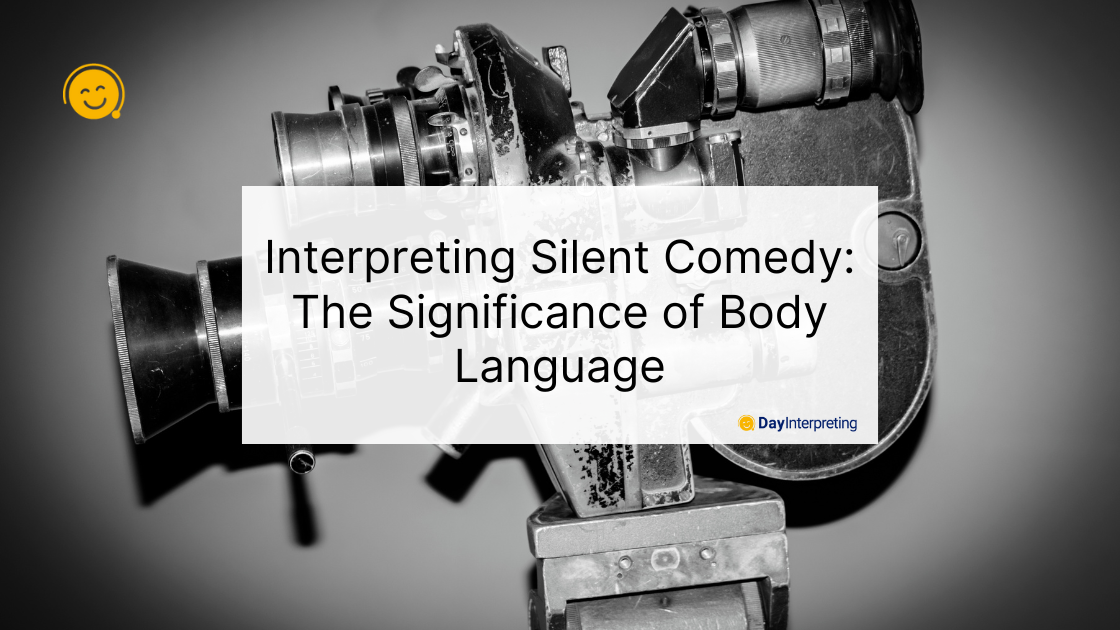In today’s modern era, the prevalence of entertainment heavily relies on conversation, singing, and words. It may seem that the era of silent films and wordless entertainment has faded away. However, this assumption is far from the truth. Wordless entertainment, particularly in the form of unspoken comedy, continues to thrive. And this is why it’s important to understand the role of interpreting silent comedy.
Understanding Silent Movies and the Messages
So, what exactly is silent comedy? It can be likened to the art of miming, where actors utilize exaggerated physical movements and comical facial expressions to convey emotions and tell stories to the audience of a silent movie. Initially gaining popularity during the silent film era of the early 20th century, silent comedy is now commonly referred to as slapstick or sight gags. It remains present in comedic films, TV shows, and street performances. The beauty of silent comedy lies in its universality, as it transcends language barriers. Regardless of the language you speak, you can enjoy these silent comedy films by personally translating and interpreting the visual humor.
Interpreting Silent Films from Charlie Chaplin
One of the pioneers of the silent era of comedy is Sir Charles Spencer Chaplin, better known as Charlie Chaplin. He was a multi-talented individual who excelled as a composer, actor, and director throughout his extensive and vibrant 75-year career. Chaplin brought laughter and comedy to the silver screen by employing visual acting techniques such as slapstick and mime. Slapstick acts often involve exaggerated movements and actions, such as the classic gag where an actor steps on a banana peel and hilariously struggles to maintain balance. Additionally, silent film actors like Charlie Chaplin relied on expressive facial expressions to enhance the storytelling to audiences that watch silent films. In an era of silent cinema, Chaplin skillfully portrayed comedic roles and conveyed narratives and silent humor solely through visual means.
Charlie Chaplin’s acting methods exerted a significant influence in preserving the legacy of silent comedy in modern society. While most contemporary movies, TV shows, and forms of media predominantly employ spoken words to convey messages, there are still a select few mediums that embrace and uphold the time-tested techniques of visual comedy pioneered by Charlie Chaplin. While the number of full-length silent movies, shows, and plays may seem limited today, they often incorporate slapstick scenes and gag humor to infuse a comedic flair into their acts.
Mr. Bean’s Silent Film Stints
Another renowned actor celebrated for his silent comedic skills is British actor Rowan Atkinson. Born in County Durham, England, Atkinson initially embarked on his career in radio, ironically relying solely on words to tell stories through a radio show called “The Atkinson People.” However, he gained worldwide recognition when he created his iconic character, Mr. Bean.
Mr. Bean is a fictional character who embodies childlike innocence trapped within an adult’s body. The show revolves around Mr. Bean’s bizarre and troublesome encounters in his everyday life, and his attempts to solve these predicaments in a comedic fashion. The main character, Mr. Bean, rarely engages in verbal dialogue with supporting characters, relying instead on bold and exaggerated actions to convey his “acted” dialogue to the audience. Physical humor takes center stage in this show, rendering spoken words unnecessary for storytelling.
Similar to Charlie Chaplin, Mr. Bean exemplifies how wordless comedy continues to thrive in the modern world. The proven comedic styles of slapstick and gag acts persistently entertain audiences. These bold movements and exaggerated acting techniques effectively convey narratives to crowds without the need for verbal communication. Charlie Chaplin’s comical movements and exaggerated facial expressions, as well as Mr. Bean’s peculiar mannerisms and gestures, serve as powerful mediums to captivate and amuse audiences, reaffirming that words are not essential to entertain the masses.
The Significance of Silence in Comedic Entertainment
Charlie Chaplin, alongside comedic film characters like Mr. Bean, has significantly influenced our perception of comedic entertainment. These iconic figures demonstrate that highly entertaining movies and shows can exist without relying on words. Their extraordinary ability to mesmerize audiences through bold slapstick and mime-like actions without uttering a single word is a rare accomplishment. In today’s age, many actors heavily rely on dialogue to effectively portray their roles. Charlie Chaplin and Rowan Atkinson represent a distinct breed of actors capable of delivering successful silent comedic shows, and their impact on the entertainment industry will endure for years to come.
The Importance of Interpreting Silent Comedy
Interpreting unspoken comedy goes beyond mere entertainment. It plays a vital role in understanding and appreciating the nuances of this unique form of comedic expression. While unspoken comedy may appear to rely solely on physical actions and exaggerated gestures, proper interpretation unlocks a deeper level of enjoyment and comprehension for the audience.
First and foremost, interpreting silent comedy allows us to grasp the intended humor and comedic timing. Silent comedians meticulously craft their performances to elicit laughter through precise movements, facial expressions, and visual gags. By interpreting these elements, we gain insight into the comedic intentions behind the actions, enhancing our overall comedic experience.
Interpreting silent comedy facilitates cultural understanding and cross-cultural appreciation. Silent comedies have transcended time and language barriers, captivating audiences around the world. As these films and performances travel across borders, the ability to interpret the physical humor becomes crucial in bridging cultural gaps. By recognizing and understanding the comedic conventions and visual cues employed by silent comedians, we can appreciate the universal nature of humor and the shared laughter it brings.
Interpretation also allows us to delve into the underlying themes and social commentary embedded within silent comedy. While the primary goal is to entertain, many silent comedies also carry subtle messages or critiques of societal norms. These messages may be conveyed through exaggerated portrayals of social situations, caricatures of authority figures, or satirical commentaries on the human condition. By interpreting these elements, we gain a deeper appreciation for the intellectual and artistic merits of silent comedy.
Wrapping Up
While silence holds a certain allure, sometimes we require assistance in communication. This also applies to actors performing slapstick comedies and gag shows without spoken words. They must be cautious with their actions and exaggerated movements to avoid misinterpretation, especially when their shows reach a global audience. Learning what to avoid can greatly enhance the enjoyment of these shows while minimizing the risk of censorship. Similarly, when dealing with people from different nationalities and languages, it is crucial to rely on expert translators and interpreters for accurate translations and interpretations of documents. Partnering with professionals ensures a seamless and worry-free business solution.





0 Comments